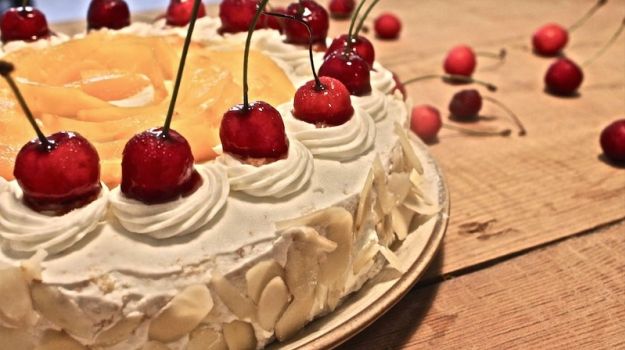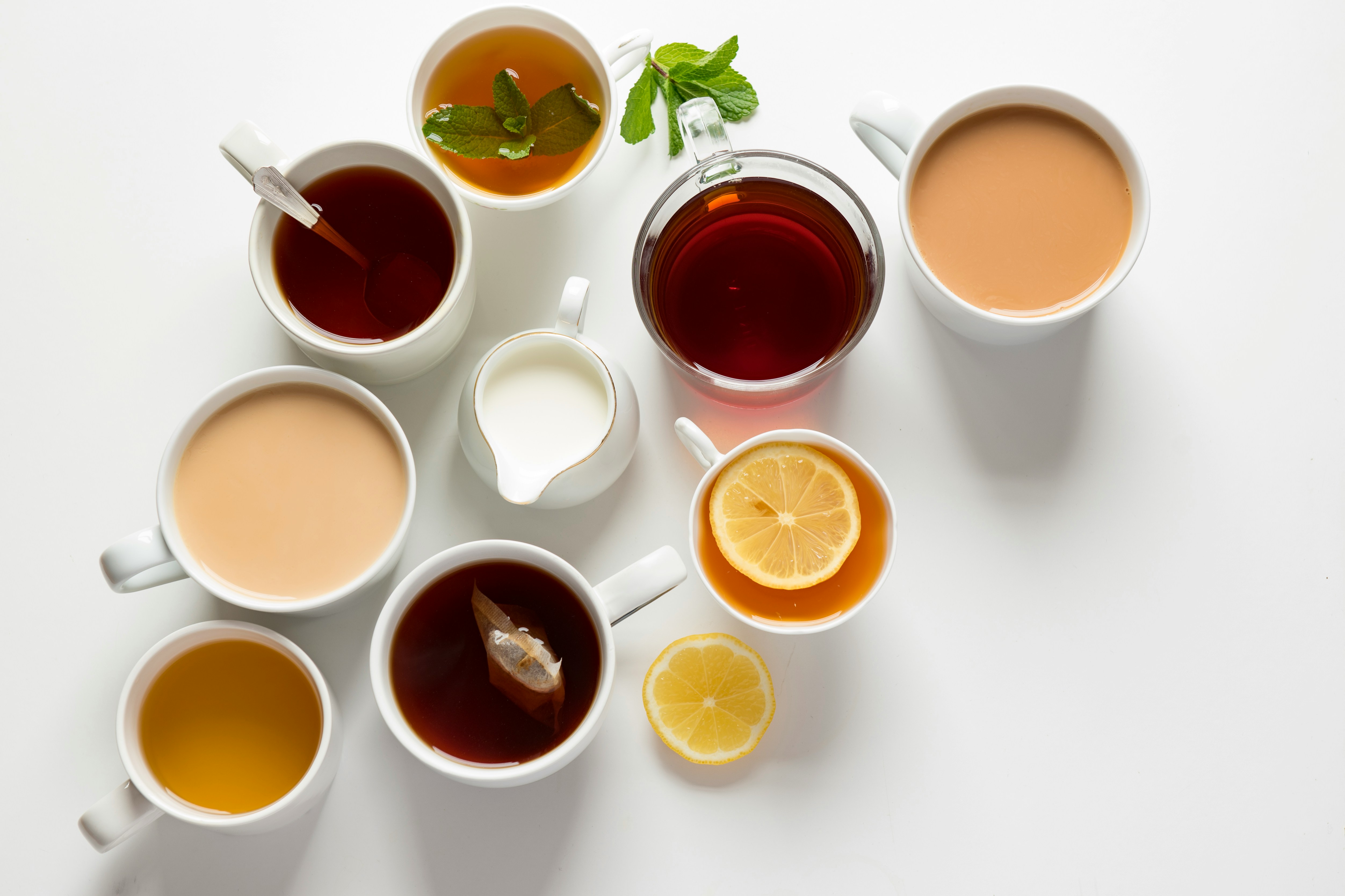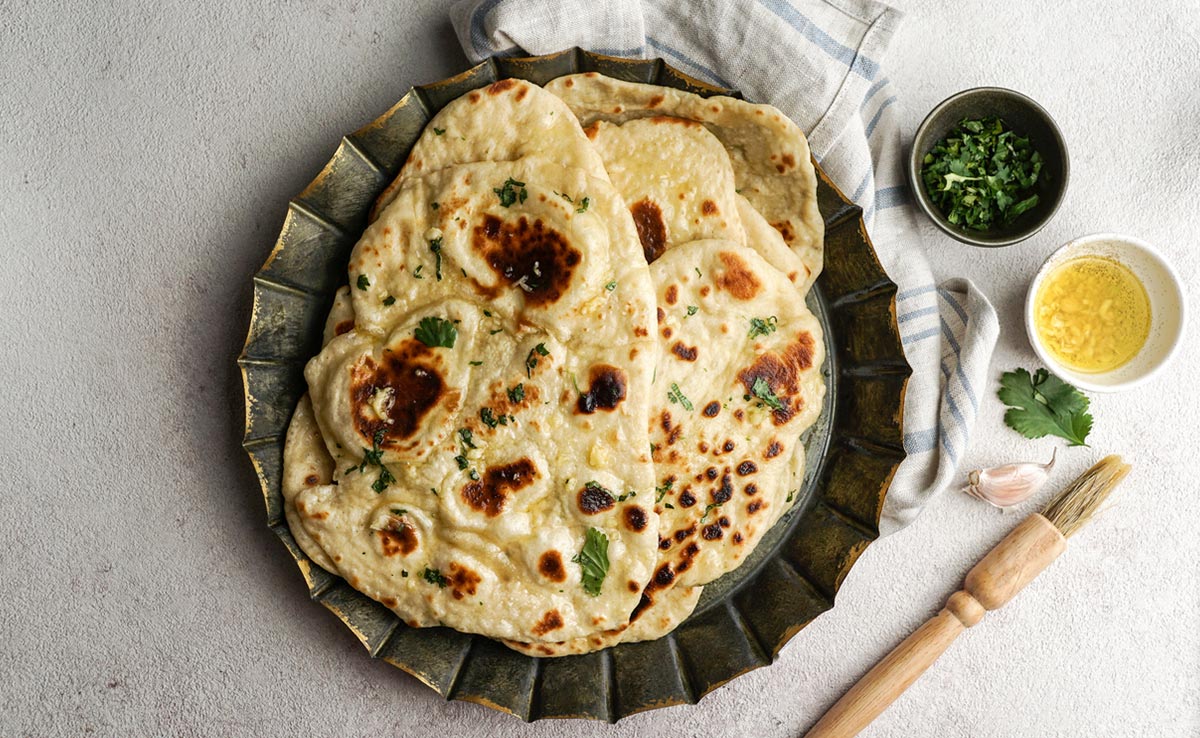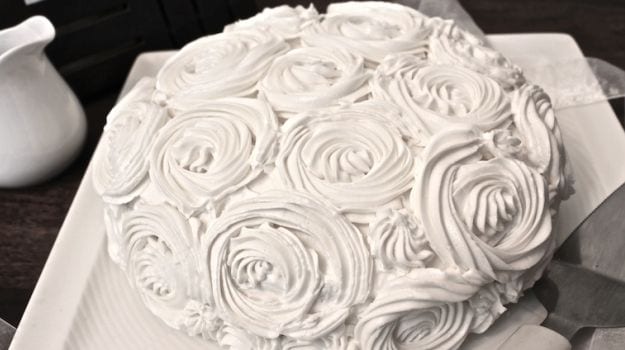I love frostings. For me, cake is essentially a carrier for frosting, and an excuse to lick the delicious, creamy layer that melts lightly on your tongue and sends you into rapturous ecstasy. Unfortunately for me (and very fortunately for my waistline), whipping cream is rather hard to come by in India unless you live near a gourmet store and have access to the international goodies they stock. There was a time when bakeries in Delhi would pack up whipped cream for me because I would beg them to. Alas, those times are long past and I never did get that lucky in Mumbai.In fact, most bakeries today, including the top ones, use imitation cream or non-dairy cream (hydrogenated vegetable oil) because it turns out to be cheaper as well as easier to use and store. Most customers are none the wiser. Of late, baking supply stores offer this and a lot of home bakers have started using the 'whipped topping' too. And yet, what this kind of 'cream' gives you in terms of ease of storage, lightness and fluffiness, it unfortunately takes away in flavour. Start paying closer attention to that whipped cream on your cake, waffles and pancakes and you will notice that it’s no cream at all. That glorious dairy flavour that comes with real cream is completely missing and is instead replaced with a slight metallic twang at the end of the tasting experience.(The Scientific Way to Cut a Cake & Keep it Fresh)
Meanwhile, we do have access to some great white butter at many dairies today and lots of people still churn fresh butter at home too. Though most butter-based frostings are easy to make, very often they tend to be far too buttery and sweet for my taste. I know that sounds hard to believe and I do love a meringue buttercream but there's something about the rich, heavy mouthfeel of buttercreams that really doesn't cut it for me and almost inevitably overpowers cakes that are light, moist and summery leaving your mouth with an unappetising greasy coating inside.(10 Best Eggless Cake Recipes)It's this yawning gap that this magic frosting steps into and fills up so wonderfully. Often called the cooked flour frosting, I've found this very unusual technique to be the perfect solution that combines the velvety-ness of easily accessible white butter with the luxurious flavour of real dairy cream even without using any cream. A slurry made of flour and milk act as the starting point for the frosting, providing a lighter, milkier counterpoint to the butter. Even better, this slurry adds stability to the frosting to help it survive the crazy heat of the Indian summer. More than a couple of people who have tried this frosting on my cakes and cupcakes have exclaimed over it and a common refrain is that it reminds them of malai from childhood. In my book, there couldn't be a higher praise.(Can Baking Improve Mental Health?)In the recipe below, I use the magic buttercream in one of my favourite cakes - mango and coconut tres leches. It is not a traditional Mexican-style tres leches by any measure but the fresh, tangy sweetness of mangoes in this dessert works beautifully well with the light melting cake that's drenched in real coconut milk and then covered with this lovely frosting. Perfect for the summer and sure to impress!(10 Best Cake Recipes)Mango and Coconut Tres LechesFor the cake: 1 cup all-purpose flour1-1/2 tsp baking powder1/4 tsp salt5 whole eggs, separated3/4 cup sugar, divided1/3 cup milk1 tsp vanillaFor the syrup:1 can sweetened condensed milk2 cups coconut milkFor the magic frosting:7.5 Tbsp flour1.5 cups milk1.5 tsp vanilla1.5 cups butter1.5 cups fine granulated sugar (not powdered sugar!)For the filling:2 Langda mangoes, peeled and slicedFlaked toasted almonds to decorate (Optional) Method:For the cake:1. Preheat the oven to 170 degree C. Grease a 9" cake pan and keep aside.2. Combine flour, baking powder, and salt in a large bowl.3. Beat the egg yolks with 1/2 cup sugar on high-speed until the yolks are pale yellow. Stir in milk and vanilla. Pour the egg yolk mixture over the flour mixture and stir very gently until well combined.4. Beat the egg whites on high-speed until soft peaks are formed. With the mixer on, pour in the remaining 1/4 cup sugar and beat until the egg whites are stiff but not dry.5. Fold egg white mixture into the batter very gently until just combined. Pour into the prepared pan and spread to even out the surface.6. Bake for 35 to 45 minutes or until a toothpick comes out clean. Turn the cake out onto a rimmed platter and allow to cool. Slice the cake through the middle to get two layers.For the syrup:1. Add condensed milk to the coconut milk, tasting along the way so you have a syrup that is sweet to your liking. Pierce the layers with a fork several times. Slowly drizzle the milk mixture — try to get as much around the edges of the cake as you can.
Method:For the cake:1. Preheat the oven to 170 degree C. Grease a 9" cake pan and keep aside.2. Combine flour, baking powder, and salt in a large bowl.3. Beat the egg yolks with 1/2 cup sugar on high-speed until the yolks are pale yellow. Stir in milk and vanilla. Pour the egg yolk mixture over the flour mixture and stir very gently until well combined.4. Beat the egg whites on high-speed until soft peaks are formed. With the mixer on, pour in the remaining 1/4 cup sugar and beat until the egg whites are stiff but not dry.5. Fold egg white mixture into the batter very gently until just combined. Pour into the prepared pan and spread to even out the surface.6. Bake for 35 to 45 minutes or until a toothpick comes out clean. Turn the cake out onto a rimmed platter and allow to cool. Slice the cake through the middle to get two layers.For the syrup:1. Add condensed milk to the coconut milk, tasting along the way so you have a syrup that is sweet to your liking. Pierce the layers with a fork several times. Slowly drizzle the milk mixture — try to get as much around the edges of the cake as you can.
2. Allow the cake layers to absorb the milk mixture for 30 minutes.For the magic frosting:1. To prepare the frosting, in a small saucepan, whisk 5 Tbsp of flour with 1 cup of milk and heat, stirring constantly, until it thickens. Make sure this slurry is very thick - thicker than cake batter and closer to a brownie batter. You won't be able to pour it and will need a spoon to scoop it out.2. Remove from heat, stir in vanilla and let it cool to room temperature. (If I’m in a hurry, I place the saucepan over ice in the sink for about 10 minutes or so until the mixture cools.) It must be completely cool before you use it in the next step.3. While the milk mixture is cooling, cream the butter and sugar together until light and fluffy. You don’t want any of the graininess of sugar to be left and the texture should be smooth.4. Then add the completely cooled milk/flour/vanilla mixture and beat the frosting well. If it looks separated, you haven’t beaten it enough! Continue to beat it until the frosting is well combined and resembles whipped cream.To assemble the cake:Spread the bottom layer of the cake with a generous amount of the frosting and top with plenty of mango slices. Repeat with the next layer and use the leftover frosting to cover the sides of the cake. Decorate cake with more mangoes and flaked almonds.Disclaimer: The opinions expressed within this article are the personal opinions of the author. NDTV is not responsible for the accuracy, completeness, suitability, or validity of any information on this article. All information is provided on an as-is basis. The information, facts or opinions appearing in the article do not reflect the views of NDTV and NDTV does not assume any responsibility or liability for the same.
Meanwhile, we do have access to some great white butter at many dairies today and lots of people still churn fresh butter at home too. Though most butter-based frostings are easy to make, very often they tend to be far too buttery and sweet for my taste. I know that sounds hard to believe and I do love a meringue buttercream but there's something about the rich, heavy mouthfeel of buttercreams that really doesn't cut it for me and almost inevitably overpowers cakes that are light, moist and summery leaving your mouth with an unappetising greasy coating inside.(10 Best Eggless Cake Recipes)It's this yawning gap that this magic frosting steps into and fills up so wonderfully. Often called the cooked flour frosting, I've found this very unusual technique to be the perfect solution that combines the velvety-ness of easily accessible white butter with the luxurious flavour of real dairy cream even without using any cream. A slurry made of flour and milk act as the starting point for the frosting, providing a lighter, milkier counterpoint to the butter. Even better, this slurry adds stability to the frosting to help it survive the crazy heat of the Indian summer. More than a couple of people who have tried this frosting on my cakes and cupcakes have exclaimed over it and a common refrain is that it reminds them of malai from childhood. In my book, there couldn't be a higher praise.(Can Baking Improve Mental Health?)In the recipe below, I use the magic buttercream in one of my favourite cakes - mango and coconut tres leches. It is not a traditional Mexican-style tres leches by any measure but the fresh, tangy sweetness of mangoes in this dessert works beautifully well with the light melting cake that's drenched in real coconut milk and then covered with this lovely frosting. Perfect for the summer and sure to impress!(10 Best Cake Recipes)Mango and Coconut Tres LechesFor the cake: 1 cup all-purpose flour1-1/2 tsp baking powder1/4 tsp salt5 whole eggs, separated3/4 cup sugar, divided1/3 cup milk1 tsp vanillaFor the syrup:1 can sweetened condensed milk2 cups coconut milkFor the magic frosting:7.5 Tbsp flour1.5 cups milk1.5 tsp vanilla1.5 cups butter1.5 cups fine granulated sugar (not powdered sugar!)For the filling:2 Langda mangoes, peeled and slicedFlaked toasted almonds to decorate (Optional)
 Method:For the cake:1. Preheat the oven to 170 degree C. Grease a 9" cake pan and keep aside.2. Combine flour, baking powder, and salt in a large bowl.3. Beat the egg yolks with 1/2 cup sugar on high-speed until the yolks are pale yellow. Stir in milk and vanilla. Pour the egg yolk mixture over the flour mixture and stir very gently until well combined.4. Beat the egg whites on high-speed until soft peaks are formed. With the mixer on, pour in the remaining 1/4 cup sugar and beat until the egg whites are stiff but not dry.5. Fold egg white mixture into the batter very gently until just combined. Pour into the prepared pan and spread to even out the surface.6. Bake for 35 to 45 minutes or until a toothpick comes out clean. Turn the cake out onto a rimmed platter and allow to cool. Slice the cake through the middle to get two layers.For the syrup:1. Add condensed milk to the coconut milk, tasting along the way so you have a syrup that is sweet to your liking. Pierce the layers with a fork several times. Slowly drizzle the milk mixture — try to get as much around the edges of the cake as you can.
Method:For the cake:1. Preheat the oven to 170 degree C. Grease a 9" cake pan and keep aside.2. Combine flour, baking powder, and salt in a large bowl.3. Beat the egg yolks with 1/2 cup sugar on high-speed until the yolks are pale yellow. Stir in milk and vanilla. Pour the egg yolk mixture over the flour mixture and stir very gently until well combined.4. Beat the egg whites on high-speed until soft peaks are formed. With the mixer on, pour in the remaining 1/4 cup sugar and beat until the egg whites are stiff but not dry.5. Fold egg white mixture into the batter very gently until just combined. Pour into the prepared pan and spread to even out the surface.6. Bake for 35 to 45 minutes or until a toothpick comes out clean. Turn the cake out onto a rimmed platter and allow to cool. Slice the cake through the middle to get two layers.For the syrup:1. Add condensed milk to the coconut milk, tasting along the way so you have a syrup that is sweet to your liking. Pierce the layers with a fork several times. Slowly drizzle the milk mixture — try to get as much around the edges of the cake as you can.2. Allow the cake layers to absorb the milk mixture for 30 minutes.For the magic frosting:1. To prepare the frosting, in a small saucepan, whisk 5 Tbsp of flour with 1 cup of milk and heat, stirring constantly, until it thickens. Make sure this slurry is very thick - thicker than cake batter and closer to a brownie batter. You won't be able to pour it and will need a spoon to scoop it out.2. Remove from heat, stir in vanilla and let it cool to room temperature. (If I’m in a hurry, I place the saucepan over ice in the sink for about 10 minutes or so until the mixture cools.) It must be completely cool before you use it in the next step.3. While the milk mixture is cooling, cream the butter and sugar together until light and fluffy. You don’t want any of the graininess of sugar to be left and the texture should be smooth.4. Then add the completely cooled milk/flour/vanilla mixture and beat the frosting well. If it looks separated, you haven’t beaten it enough! Continue to beat it until the frosting is well combined and resembles whipped cream.To assemble the cake:Spread the bottom layer of the cake with a generous amount of the frosting and top with plenty of mango slices. Repeat with the next layer and use the leftover frosting to cover the sides of the cake. Decorate cake with more mangoes and flaked almonds.Disclaimer: The opinions expressed within this article are the personal opinions of the author. NDTV is not responsible for the accuracy, completeness, suitability, or validity of any information on this article. All information is provided on an as-is basis. The information, facts or opinions appearing in the article do not reflect the views of NDTV and NDTV does not assume any responsibility or liability for the same.
Advertisement
For the latest food news, health tips and recipes, like us on Facebook or follow us on Twitter and YouTube.
Tags:








